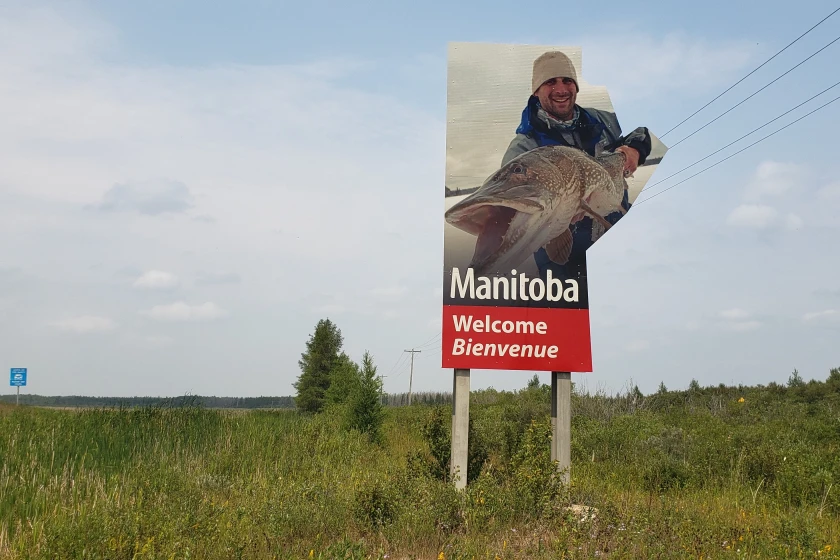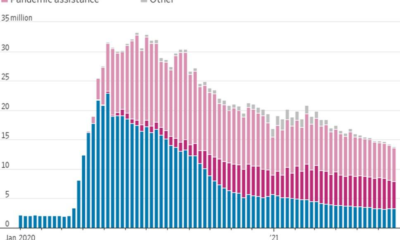Latest
The Polar Cruise Industry and the Political Landscape in the Arctic Region: Russia in Focus

Polar expedition cruises sailing in the Arctic region are just a small part of the rapid expansion of the global cruise industry. Sailing on board of this kind of ships includes voyages to the U.S. State of Alaska, Canada, Finland, Greenland (Denmark), Iceland, Norway.
Russia, and Sweden. Vessels specially designed for operation in the polar waters bring guests to cold and remote destinations and feature on-board lecturers to give an expert’s perspective on the local ecology, biology, history, and culture of the area. In recent years, the COVID-19.
pandemic has affected this high cost businessand forced companies to abandon remote destinations to avoid spread of the virus in Indigenous communities. And recently.
the shifting political landscape has posed significant issues for the development of the Arctic expedition cruise market and the cruise industry worldwide. The Russia-Ukraine conflict has made cooperation between northern countries even more challenging, and previous efforts to establish effective working relationships have failed in many sectors of the economy in the Arctic. The polar cruise industry’s financial woes and political impact have created havoc with passengers and staff alike and affected their itineraries.
The Arctic remains an attractive destination due to the potential for exotic experiences and wilderness. In the High North, with the transformation of cruise products and the development of polar exploration tourism in recent years, various specialized options have been created to show the unique environment of the area. The attractive locations with the most visitors are Svalbard, the eastern part of the Canadian Arctic including Baffin Island and the Northwest Passage, the Faroe Islands, Greenland, Jan Mayen, and Franz Joseph Land.
According to the Association of Arctic Expedition Cruise Operators (AECO), the total number of passengers on expedition cruise ships in the Arctic region reached 32,356 in 2019. Svalbard is recognized as one of the most visited places in the High Arctic by cruise ships.
Over the past few decades, tourism there has flourished and became a substantial force for development of the archipelago, with visitor numbers having grown by over 70 percent.
According to a recent study, the expedition cruise industry in the polar regions makes a significant contribution to the local (Arctic) economy of the northern countries of two thirds of the amount of money, while conventional cruises contribute just a third of it, Despite of concerns on safety and environmental issues.
there is a huge potential for future economic and social changes resulted in the development of the polar cruise industry in the Arctic region..
The COVID-19 pandemic canceled dozens of expedition ships usually visiting Svalbard and Greenland in 2020 and 2021, as soon as travel restrictions were introduced. During the COVID-19 pandemic, tour operators put their efforts to prepare for the next seasons hoping to start operations as soon as possible. The decline in the travel industry caused by the introduction of travel bans and restrictions for certain destinations put even more pressure on the companies operating in the Arctic. However, cruise companies were focused on creating their own COVID-19 protocols while following any interim orders instituted by federal and territorial.
governments. Also, expedition tour operators had used the time of uncertainty to construct new vessels that have the Polar Class (ice-strengthened vessels and icebreakers) and launch sales and marketing efforts.
Several new vessels have been delivered to the industry just recently, and new ocean-going explorer ships are scheduled to launch soon.
in addition, growing interest in travel helps to shape the fast development of the expedition cruise industry in the post-pandemic landscape.
Under conditions when the COVID pandemic disrupted the expedition cruise industry worldwide, tour operators continued to adapt to the challenging working environment. To minimize a virus spread and port expenses companies tightened their COVID-19 protocols, as well as they introduced on-board testing on a regular basis, mandatory use of masks for guests and the crew, and ast-minute itinerary changes.
Once the vaccines became available, cruise lines started to invite fully vaccinated travelers on board.
Another strategy which helped expedition tour operators to survive during the COVID-19 pandemic was to sell voyages for the next seasons far in advance.
A few factors were driving this trend, from the promise of wide vaccination rates to demand for travelers to be back at sea. This has helped the industry a lot, at least to bring some money for current needs and look ahead to a brighter future. Additionally, international organizations with the focus on polar cruising such as IAATO and AECO were pretty helpful when they set up the Covid Advisory Working Groups assisting with communications, with relevant gateways and informing tour operators about travel restrictions and introducing good practices.
However, the challenges for the expedition polar industry were not overcome when vaccines became available and the borders were opened for globetrotters. In the Arctic region, tensions began to grow as the Russia-Ukraine conflict started in February 2022. As a result of this, the Arctic States have suspended cooperation with Russia at the Arctic Council. where Russia holds its chairmanship in 2021-2023. Currently, the northern countries are cooperating between themselves in the Council but not involving Russia, including scientific collaboration and commercial activities.
In the last decade, the world has witnessed an escalation of political tensions between Russia and the West. The political landscape near the borders of Russia has been tense, and nowadays the Russia-Ukraine conflict is endangering cooperation in the North even more, with.
significant implications for all sectors of the Arctic economy and, in particular, the expedition cruise industry. While northern countries are yet to fully recover from the grave repercussions of the COVID-19 pandemic, the Russia-Ukraine conflict poses another major threat to the regional economy, with specific destinations being directly affected.
The Russian Arctic was considered as one of the future highlights for polar tourism.but sailing plans for this area of the Arctic have been canceled or postponed by many companies due to the growing tensions. In recent years, a number of foreign tour operators such as Ponant.
Aurora Expeditions, Heritage Expeditions and others used to sail and create itineraries covering the Far East region (Chukotka, Kamchatka, Wrangel Island), Franz Josef Land, and the Northern Sea Route.
Long-awaited plans, however, were ruined when military operations were started at the Russia-Ukraine border, far away from the Arctic Circle.
As a result of the political instability, a few cruise companies have canceled many of their planned calls in the region in the summer of 2022, and they have changed previously scheduled northern voyages for the next few years.
For example, Aurora Expeditions and Poseidon Expeditions have confirmed that they would make changes to their upcoming voyages that include Russian itineraries in the North.
Also, there are last minute changes in the itineraries of such cruise companies as National Geographic which now offers a 20-day voyage from Nome, Alaska to Japan without stops in Russia, as was previously planned.
Quark Expeditions has released an update on voyages to Franz Josef Land, Severnaya Zemlya, and Novaya Zemlya: the company has stopped operating or accepting bookings for trips to the Russian Arctic, and it is replacing these itineraries with voyages to Greenland, Iceland, and Svalbard in 2022.
Also, expedition cruising newcomers such as Swan Hellenic, with the ship SH Minerva, which debuted into service in 2021.
had plans to travel to remote destinations in the Arctic region. However, the recent conflict has changed their plans dramatically forcing the companies to exclude the Russian North from their lists of destinations.
Even distant locations such as Northwest Alaska (Nome, Seward, etc.) have been negatively affected by the recent Russia-Ukraine conflict.
Previously, many vessels sailed between Alaska and the Pacific coast of Russia. The Tracking service Project44, which provides information on port activity and cargo movement, has already reported a decrease in the number of vessels at Russian ports.
This political landscape creates lots of logistical obstacles for ships: as the conflict and restrictions continue to escalate, sanctions may prevent foreign ships from being able to receive supplies at Russian ports. Also, the Russia-Ukraine conflict itself creates a whole host of supply chain challenges. The disruption of fuel prices on the world market is expected to lead to an increase in travel costs for customers.The sanctions imposed on Russia by Western countries will further diminish cooperation in the area of tourism in the North due to the closure of vital port and logistic operations, and further travel restrictions.
The 2022 season has become very challenging for domestic expedition tourism in the Russian Arctic region. Cruises to remote northern locations usually booked by international tourists, COVID-19 travel restrictions, and political tensions put pressure on local tour operators in 2022. The only expedition to the North Pole on board nuclear icebreaker “50 Years of Victory” has invited Russian tourists and winners of the Big Change national contest among school students in the 2022 summer.
However, it is complicated to stay on top of the expedition cruise pyramid when sanctions are in place. Nowadays, Russia is focused on developing domestic tourism and attracting Russian tourists to the Arctic. However, not much has been done on negating the impacts of the war on the Arctic tourism industry, as not many cooperation channels are left, and even Russia´s chairmanship in the Arctic Council has a limited working capacity.
Against all the issues, which include fuel prices on the rise, travel restrictions, uncertainty, and challenges of supply chains, the competitors have taken advantage of opportunities in the industry. For example, the French shipping company Ponant has been offering North Pole tours since 2022.
As soon as the Baltic cruises are under threat, Regent Seven Seas Cruises is removing stops in the Solovetsky Islands, Arkhangelsk, Murmansk and St. Petersburg.
Atlas Ocean Voyages has changed itineraries and stops in Finland and Estonia, instead of St. Petersburg as well.
Currently, tour operators try to adjust their sailing schedules according to the current situation.
Due to its remoteness, together with other factors, the Arctic is still considered as a difficult destination to access. Despite challenges created by the COVID-19 pandemic and changes in political landscape, the polar expedition industry is growing fast. Bit by bit.
expedition cruise ships are returning to the Arctic Ocean, with updated COVID-19 protocols and new environmental protection approaches, in accordance with the federal and territorial governments.
Polar-class vessels (ice strengthened ships and icebreakers) designed to sail the icy waters are ready to receive more adventurous customers looking to travel off the beaten track and enjoy pristine environments. However, the political landscape does not make it easy for tour operators to work in the area and they will most likely continue to alter Russian itineraries due to the Ukraine conflict. Concerns are growing that further escalation of tensions between Russia and the West will lead to decreasing collaboration and rising fuel prices.
with knock-on effects for the cruise industry and the development of the region. The current geopolitical crisis will have far reaching consequences in a variety of areas, including polar tourism, logistics and cooperation across the northern hemisphere. If Arctic cooperation unravels, the lack of infrastructure, travel restrictions and sanctions could present challenges for development of the polar cruise industry in the Arctic region in the coming years.
Latest
A drug company abandoned a treatment for ‘bubble boy disease.’ After a 5-year fight, this little girl is about to get it

Later this spring, a little girl in California who essentially has no immune system will receive a lifesaving treatment for “bubble boy disease” thanks to the persistence of a dogged group of parents, a pediatrician, a veteran newsman and a few episodes of “Grey’s Anatomy.”
Five-year-old Seersha Sulack has the same rare disease portrayed in the 1976 John Travolta movie, “The Boy in the Plastic Bubble.” A germ – even a common cold – could kill her, and so she stays away from anyone outside her immediate family.
The treatment she’s been waiting for had stunning, near-perfect results in a clinical trial, but it’s been sitting on the shelf for years in the US because the pharmaceutical company that once owned the license abandoned it when it decided not to not to pursue approval from the US Food and Drug Administration.
“It’s a pretty tough situation,” said Dr. P.J. Brooks, acting director of the Division of Rare Diseases Research Innovation at the National Institute of Health’s National Center for Advancing Translational Sciences. “You have an effective therapy like (this one) and people can’t get access to it.”
Seersha is expected to get the treatment next month. She’ll become only the second child in the US in the past five years to receive it; the first child received it earlier this month.
The treatment is for a particular type of severe combined immunodeficiency called ADA-SCID that’s extremely rare – in the US, eight babies a year are born with it. Currently, 26 children in the US and Canada are on the waiting list to get the therapy, according to Dr. Donald Kohn, a UCLA scientist who has been working on the treatment for nearly 40 years.
The treatment is a type of gene therapy: Doctors will give Seersha a normal copy of the defective gene that disabled Seersha’s immune system.
Gene therapies hold great hope for all sorts of diseases, but they’re very expensive to develop, and pharmaceutical companies can’t be sure that they’ll make a profit because health insurance companies haven’t always agreed to pay the multi-million dollar price tags.
“It has not escaped our attention at FDA that there have been some clouds on the horizon in gene therapy,” Dr. Peter Marks, head of the US Food and Drug Administration’s Center for Biologics Evaluation and Research, said at a biotech conference in California in October. “We really want to try to see what we can do to move things forward.”
The gene therapy Seersha’s been waiting for was once called OTL-101, for Orchard Therapeutics Limited. Orchard launched in 2016 with OTL-101 as its “lead candidate,” but four years later, the company announced it would “reduce investment” in the therapy and prioritize treatments for more common conditions.
“A lot of us were upset and angry,” said Seersha’s mother, Shayla Sulack, noting that OTL-101 was developed with millions of dollars in state and federal government aid.
“We were always, ‘it’s going to happen, it’s going to happen,’ ” she added. Then, after Orchard decided not to pursue the therapy, “a bunch of us SCID moms were like, ‘Excuse me?’ ”
In a statement to CNN, an Orchard spokesperson wrote that “after encountering technical challenges related to the commercial-grade manufacture of this particular therapy, we made the very difficult decision to limit additional investment in [the SCID gene therapy].” The spokesperson spoke on the condition of anonymity.
A mother’s ‘oh, crap’ moment
Shayla and her husband, Stephen Sulack IV, were high school sweethearts at Tehachapi High School, about 100 miles north of Los Angeles. In 2010, when she was 18 and he was 19, they married at the Little White Wedding Chapel in Las Vegas.
Stephen was in the Army, and over the next few years, the young couple moved to various military bases. Their daughter Skylar was born in 2012 and son Stephen V in 2014.
In 2017, the family moved to Hawaii for Stephen’s new post as a Black Hawk helicopter pilot at Schofield Barracks in Oahu. Two weeks later, Seersha was born at Tripler Army Medical Center in Honolulu.
Weighing 6 pounds and 10 ounces, Seersha appeared perfectly healthy, and her parents took her on family outings, going to Dole Plantation and Waikiki Beach when she was five days old.
Strolling around the shops near the beach that day, the family went into a Tesla dealership just for fun. While sitting in a showroom car, Shayla got a phone call from a number she didn’t recognize.
It was a geneticist at Tripler. He told Shayla that a routine blood test, a prick on a newborn’s heel done in nearly every state, showed Seersha’s level of T cells – a type of white blood cell crucial to fighting off infections – was just five. Normal T cell levels for newborns are around 3,000.
This meant any infection, no matter how small, could kill Seersha. The geneticist said to bring her back to the hospital at Tripler immediately.
Shayla says her first reaction was: “Oh, crap.”
Not only had they been going everywhere with their new baby, but Seersha’s big brother and sister had been affectionately pawing all over her.
Shayla and Stephen left the Tesla dealership and made the 20-minute drive to the hospital while Shayla’s parents took the older two children home in their car.
At Tripler, doctors explained more about SCID, and a psychologist was on hand to help the Sulacks deal with the shocking news.
Only about one baby a year is born with the SCID in Hawaii, according to Sylvia Mann, genetics coordinator at the state’s department of health.
The next day, Shayla and Seersha were on a military medical transport flight to Los Angeles. Seersha was in an incubator in the front of the plane, and the other patients were kept in the back to decrease the chances they could get her sick.
An ambulance drove Shayla and Seersha to UCLA Mattel Children’s Hospital, one of 47 medical centers in the US and Canada that specialize in SCID as members of the Primary Immune Deficiency Treatment Consortium funded by the National Institutes of Health.
Once there, doctors laid out the options for saving Seersha’s life.
Options for Seersha
It turned out none of them were very good.
ADA-SCID is treated with regular injections to replace a missing enzyme that helps with immune function. They help a great deal, but they don’t give the child a full immune system, and their effectiveness can wane over time.
The UCLA doctors laid out two longer-term options. Seersha could receive a stem cell transplant, which is lifesaving and the standard treatment for SCID. Doctors would test her mother, father, brother, and sister and determine the best genetic match, and then would extract cells that specialize in forming blood cells and give them to Seersha.
Testing showed that any of her family members could donate to her, but none of them was a particularly good match. This was bad news for two reasons: One, the transplant likely wouldn’t be as effective. Two, Seersha would be more likely to suffer complications.
Latest
Youssef Ramadan earns ACC Men’s Swimmer of the Year

After his historical season, Youssef Ramadan took the ACC Men’s Swimmer of the Year title for the 2022-23 season, the league announced Monday afternoon.
Ramadan became the first-ever national champion in program history, swimming the second-fastest 100 fly time in NCAA history at 43.15. He earned five All-American awards and two honorable mentions at NCAA’s.
Ramadan was named male MVP at ACC’s in February for the second year in a row, on top of two gold medals and two silver medals. He also took ACC Male Swimmer of the Week twice earlier in the season.
Throughout the 2022-23 season, he’s broken four individual school records and two relay records.
Latest
Changes on tap for Americans who hunt waterfowl in Manitoba

Americans planning to hunt waterfowl this fall in Manitoba will be able to draw a seven-day license but must enter a lottery for a limited number of “foreign resident” licenses in subsequent years if they don’t book their trip through an outfitter, under new waterfowl regulations the province announced earlier this month.
“As part of the initial phase-in strategy for fall of 2023, Manitoba is ensuring that all applicants for the draw will receive a seven-day Foreign Resident Migratory Game Bird License,” Manitoba’s Ministry of Natural Resources and Northern Development said on its website. “In subsequent years the allocations for each license type will be determined based on license sales, hunter questionnaire data from all user groups and stakeholder input. The combination of the seven-day license and associated draw for freelance foreign resident hunters is intended to discourage visiting hunters from creating lasting systems of control that inhibit other hunters.”
The new regulations are a key component of the Waterfowl Hunting Modernization Project, a proposal the Manitoba government unveiled last fall before a 45-day comment period that ended Friday, Oct. 7.
American hunters will now have the opportunity to access the following Manitoba waterfowl and upland game bird licenses, the province said:
Foreign Resident Upland Game Bird License: Required to hunt upland birds and can be purchased online and is subject to the same regulatory framework as resident hunters.
Foreign Resident Migratory Game Bird License: Required to hunt migratory birds and is a seven-day license, which can be accessed either by entering a draw process or booking with a licensed outfitter.
Foreign Resident Legacy Migratory Game Bird License: A grandfathered opportunity for qualifying foreign resident landowners or lessees of Crown land.
To qualify for the special grandfathered provisions, Americans (and other foreign residents) must have owned property in Manitoba before Sept. 1, 2022, and still own that property; be a shareholder of a corporation owning registered property in Manitoba; or be a crown land lessee. Eligible land interest holders must also have hunted waterfowl in Manitoba during the previous five years between 2018 and 2022 to qualify for the legacy license.
-

 Business2 years ago
Business2 years agoHyundai Leads Industry in U.S. News & World Report 2023 Best Cars for the Money Awards
-

 Innovation2 years ago
Innovation2 years agoJay-S ventures into the urban genre with “Bailar en la Playa” his latest production
-

 Business2 years ago
Business2 years agoThree Questions Small Business Owners Should Ask In Creating A Workplace Culture – Forbes
-

 Business2 years ago
Business2 years agoA Fintech Makes It Easy For Small Businesses To Offer 401(k) Retirement Benefits – Forbes
-

 Business2 years ago
Business2 years agoBritain’s Small Businesses See Better Times Ahead But Is Their Optimism Justified? – Forbes
-

 Money2 years ago
Money2 years agoCharlie Crist leads Democratic gubernatorial field again in money chase – Florida Politics
-

 Money2 years ago
Money2 years agoTesting New Tools for Horizon Worlds Creators To Earn Money
-

 Business2 years ago
Business2 years agoSmall Business Labor Shortage – Forbes
